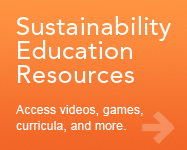From Industrial Wasteland to Community Park
Key Facts:
Brownfields are abandoned, environmentally-contaminated industrial or commercial sites. People who come into frequent contact with the leftover solvents, cleaners, and oil found on these sites often develop major health issues. In addition, the chemicals found in brownfields contaminate soils and often leak directly into underground water resources. Degraded parts of some major U.S. cities contain up to 1,000 brownfields per square mile. (Source: Maryland Commission on Environmental Justice and Sustainable Communities)
Bioremediation involves using plants, fungi, or soil microbes to clean up toxic brownfields. Some types of deep-rooted plants can even be used to remove toxic metals from the soil. One example is Thlaspi Caerulescens, commonly known as Alpine Pennycress. According to Cornell University researchers, a normal plant can only store about 100 parts per million (ppm) zinc and 1 ppm cadmium. Thlaspi can store up to 30,000 ppm zinc and 1,500 ppm cadmium in its shoots without being negatively affected. In fact, these types of plants thrive while restoring the brownfield to its natural state. (Source: U.S. Department of Agriculture)
Cleaning up these sites is not only good for the environment, but also helps create economically-strong, healthy communities. The U.S. Environmental Protection Agency (E.P.A.) says brownfield clean-ups can increase nearby residential property values by 2 to 3 percent. Healthy buildings, schools, and parks have taken shape on redeveloped brownfields. Formerly poisonous sites can even turn into valuable community green space: the new Olympic Park in London, Brooklyn Bridge Park in New York City, and Toronto’s new park network are coming in over hectares of previously bombed-out, toxic sites. (Source: Environmental Protection Agency)
This animation is designed to be a basic introduction to sustainable design concepts, created for the general public and students of all ages. We look forward to receiving your comments.
All Animations
- Buidling a Park Out of Waste
- Designing for Active Living
- Designing Neighborhoods for People and Wildlife
- The Edible City
- Energy Efficient Home Landscapes
- Infrastructure for All
- Leveraging the Landscape to Manage Water
- Revitalizing Communities with Parks
- Urban Forests = Cleaner, Cooler Air

 This Web site has been made possible through a grant by:
This Web site has been made possible through a grant by: